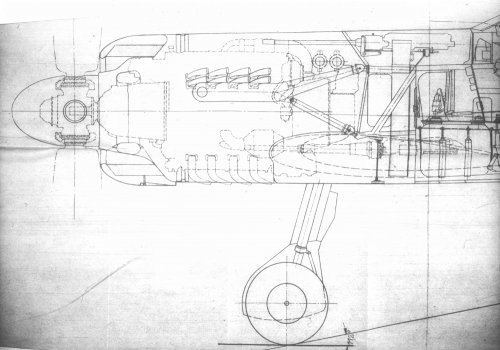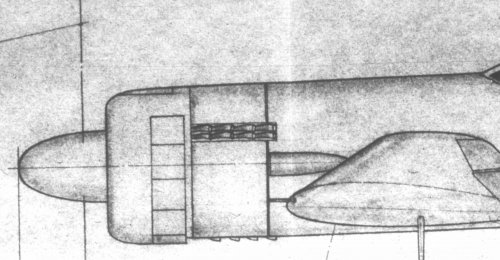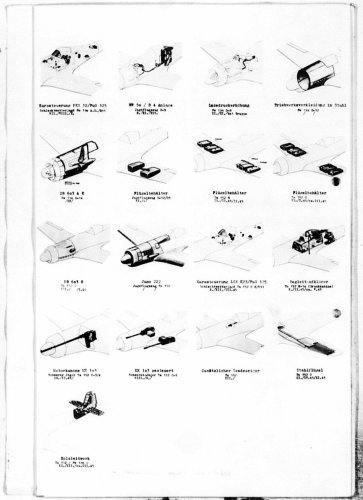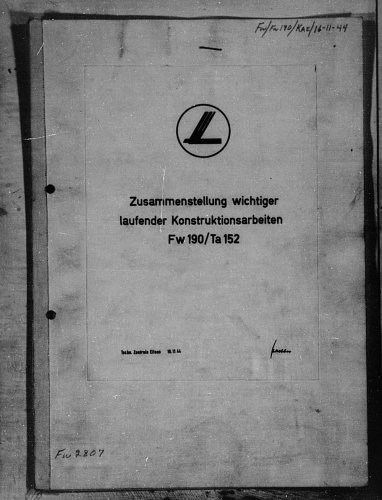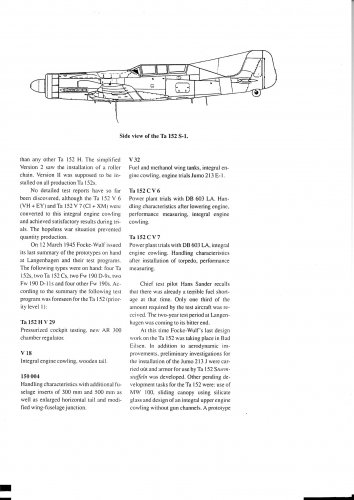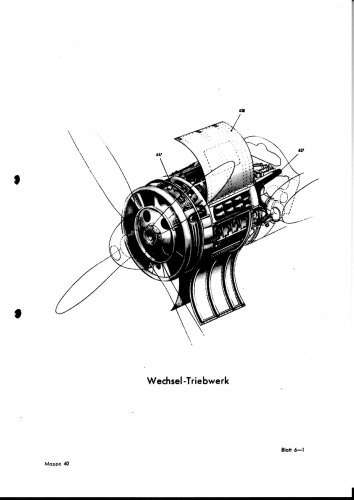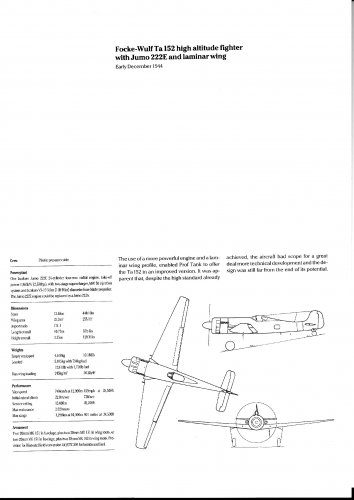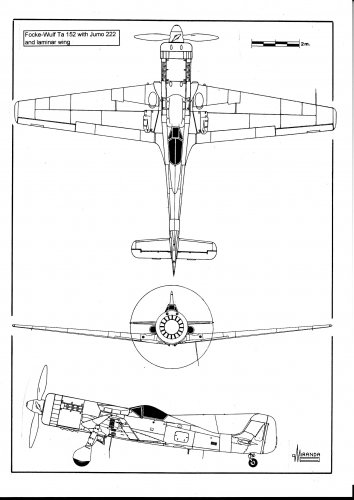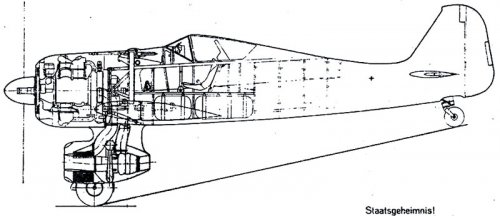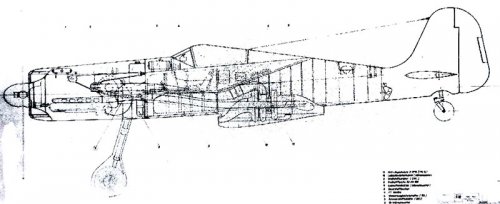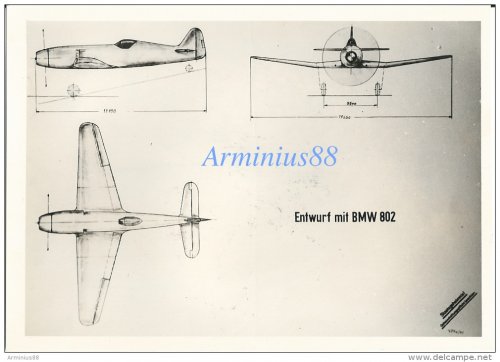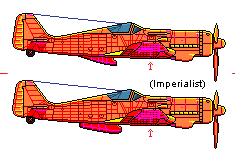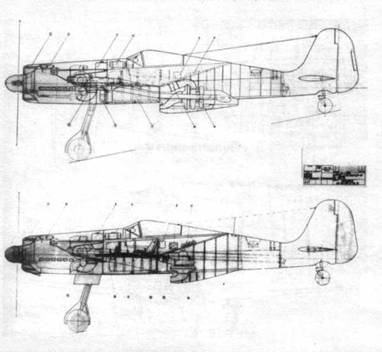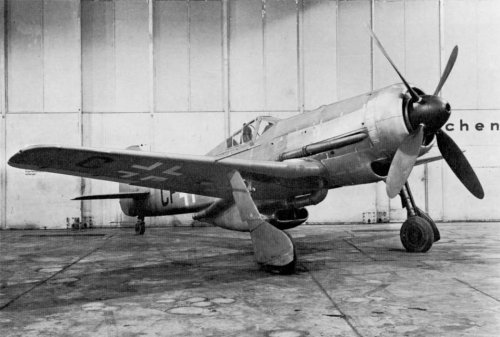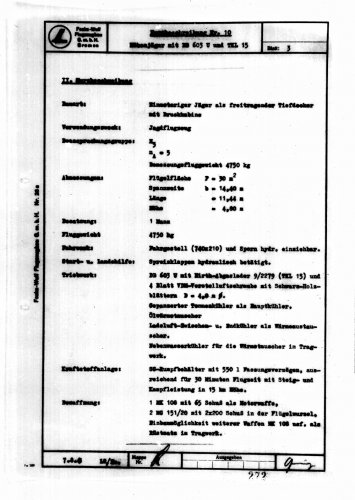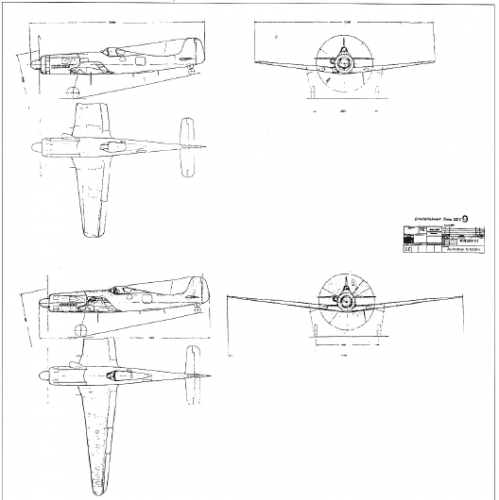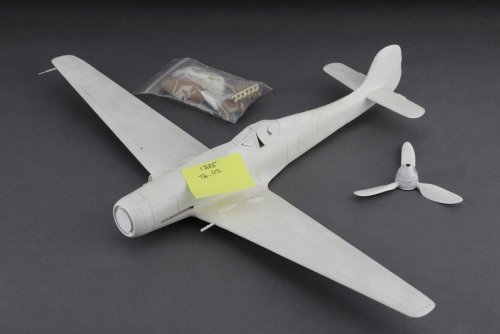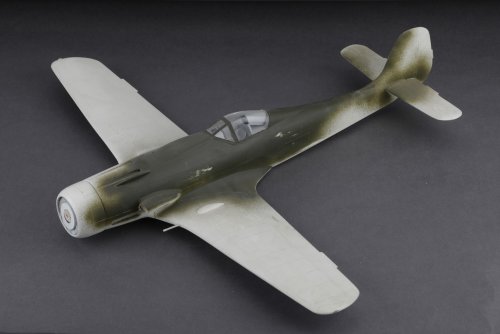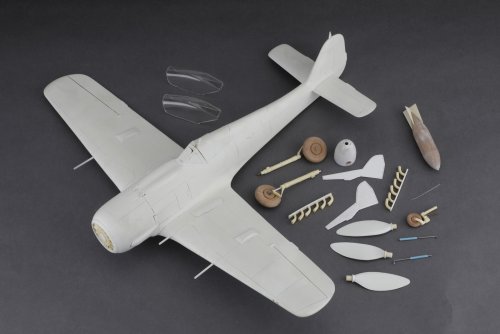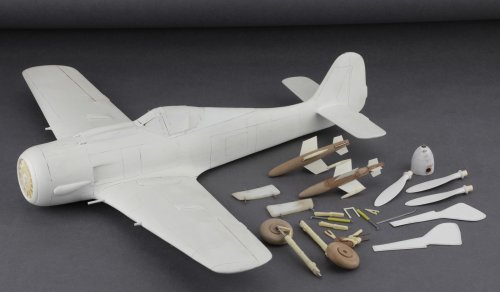You are using an out of date browser. It may not display this or other websites correctly.
You should upgrade or use an alternative browser.
You should upgrade or use an alternative browser.
Focke Wulf Fw 190 / Ta 152 Projects & Variants
- Thread starter Justo Miranda
- Start date
sgeorges4
I really should change my personal text
- Joined
- 8 October 2017
- Messages
- 665
- Reaction score
- 334
Did somebody can scan or have this document regarding the ta 152 with jumo 222:

I also found this:
https://ww2aircraft.net/forum/threads/ta-152.1330/
https://forum.warthunder.com/index.php?/topic/189182-ta-152h-1-and-fw-190d-12-d-13-with-jumo-213eb-engines/&


I also found this:
https://ww2aircraft.net/forum/threads/ta-152.1330/
https://forum.warthunder.com/index.php?/topic/189182-ta-152h-1-and-fw-190d-12-d-13-with-jumo-213eb-engines/&
Imperialist
Shipbucket FD-Scale Artist
- Joined
- 18 December 2013
- Messages
- 19
- Reaction score
- 10
Hi George, it was supposed to be a 4-bladed VS-19 propeller, diameter 3.60m.

Edit: source of image is https://www.alternatehistory.com/forum/attachments/jumo222ta152-jpg.218967/
Vaguely remember it being on a Warthunder forum post but that has disappeared.
Edit: source of image is https://www.alternatehistory.com/forum/attachments/jumo222ta152-jpg.218967/
Vaguely remember it being on a Warthunder forum post but that has disappeared.
Attachments
- Joined
- 11 June 2014
- Messages
- 1,533
- Reaction score
- 2,848
sgeorges4 said:what kind of propeler was use by this variant?
Imperialist is right. Although that drawing appears to be inaccurate.
Attachments
- Joined
- 11 June 2014
- Messages
- 1,533
- Reaction score
- 2,848
More
Attachments
-
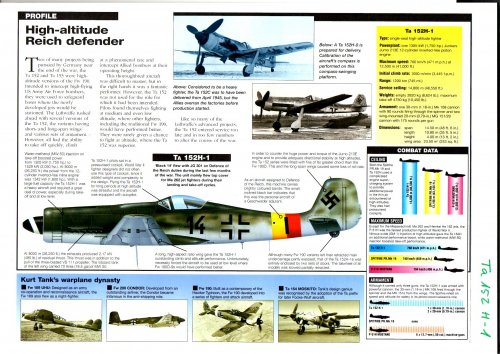 img211.jpg1.4 MB · Views: 409
img211.jpg1.4 MB · Views: 409 -
 img210.jpg273 KB · Views: 279
img210.jpg273 KB · Views: 279 -
 img209.jpg306.6 KB · Views: 236
img209.jpg306.6 KB · Views: 236 -
 img208.jpg321.6 KB · Views: 227
img208.jpg321.6 KB · Views: 227 -
 img207.jpg752.8 KB · Views: 214
img207.jpg752.8 KB · Views: 214 -
 img206.jpg758.5 KB · Views: 221
img206.jpg758.5 KB · Views: 221 -
 img205.jpg1.4 MB · Views: 211
img205.jpg1.4 MB · Views: 211 -
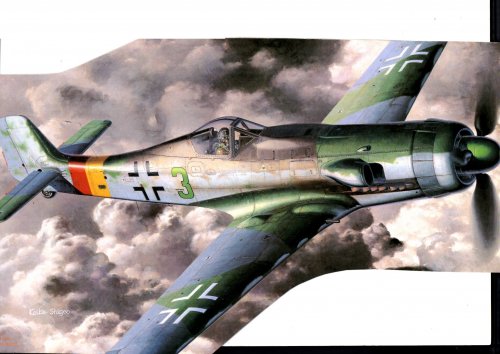 img204.jpg962.9 KB · Views: 207
img204.jpg962.9 KB · Views: 207 -
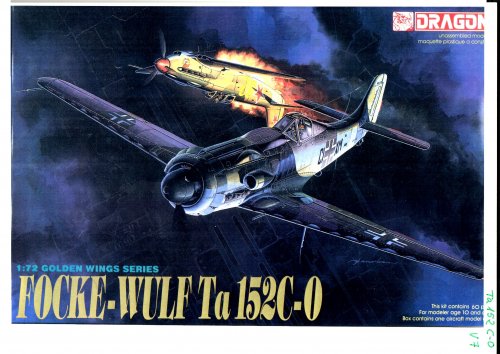 img203.jpg1.3 MB · Views: 219
img203.jpg1.3 MB · Views: 219 -
 img202.jpg801 KB · Views: 301
img202.jpg801 KB · Views: 301
- Joined
- 2 August 2006
- Messages
- 3,253
- Reaction score
- 1,518
- Joined
- 22 January 2006
- Messages
- 4,206
- Reaction score
- 1,998
what kind of turbo it have?
HeS 8 turbojet? I'm reading it at Justo Miranda "Focke Wulf Jet Fighters" pg 16 The drawing is on page 19.
No problem about your English. I try to do my best as well.
- Joined
- 3 June 2006
- Messages
- 3,092
- Reaction score
- 3,939
It's not a turbojet, but rather a turbocharger for the BMW-801 Version D radial engine.
This blue print shows configuration from early August 1942. It was never tested, because it would have meant a main shift of the center of gravity and the turbocharger would have been ripped off during a crash landing.
Focke Wulf selected then the configuration with the DB 603 and the turbocharger Hirth TK-11, which was developed into the test aircraft Fw 190 V18U1 CF+OY. It first flew on 20th December 1942.
Picture caption:
This blue print shows configuration from early August 1942. It was never tested, because it would have meant a main shift of the center of gravity and the turbocharger would have been ripped off during a crash landing.
Focke Wulf selected then the configuration with the DB 603 and the turbocharger Hirth TK-11, which was developed into the test aircraft Fw 190 V18U1 CF+OY. It first flew on 20th December 1942.
Picture caption:
Diese Werkzeichnung zeigt die Anordnung des BMW-801-Abgasturboladers als Anhängegerät direkt unterhalb des Motors zwischen dem Fahrwerk. Eine Erprobung in dieser Kombination gab es allerdings nicht.
- Joined
- 22 January 2006
- Messages
- 4,206
- Reaction score
- 1,998
It's not a turbojet, but rather a turbocharger for the BMW-801 Version D radial engine
Excellent reply, many thanks fightingirish!
- Joined
- 3 June 2006
- Messages
- 3,092
- Reaction score
- 3,939
Source: Japanese Secret Projects: Experimental Aircraft of the IJA and IJN 1939-1945 - Edwin M. Dyer, III - page 147 - Crecy Publishing 2009-11-05Focke-Wulf Ta 152 high altitude fighter
In April 1945, the Japanese purchased the specifications for the Ta 152 as a means to rapidly acquire a high-altitude fighter. However, by this time there was simply no way for the Japanese to act on the material obtained.
Another link: http://web.archive.org/web/20071226193440/http://members.aol.com/pelzig/ta152.htm
- Joined
- 8 March 2009
- Messages
- 1,048
- Reaction score
- 1,275
"Fw(Ta)-152:
During late 1944 and early 1945 Japanese representatives in Germany exhibited a keen interest in this aircraft , an improved version of the Fw-190. In November 1944, the Japanese in Berlin were preparing to forward material on the TA-152 to Tokyo. By January 45, the Japanese Army representatives in Berlin had acquired an outline of the construction, general plans, a list of materials used in construction, and a list of equipment to be used with the Ta-152.
The contract for purchase of manufacturing rights for this aircraft was not signed until 26 March 45, although release was granted in January. A captured German Air Ministry letter, dated 5 January 45, authorizes the fulfillment of a Japanese request for rights to copy the Ta-152 C and H. The necessary drawings were to be prepared without delay -- at least general drawings if time did not permit the preparation of full blueprints. Those drawings were to be handed over independently of the signing of the appropriate contract. The plans and blueprints were forwarded to Kiel for shipment, but did not arrive there before 15 March. Transportation to Japan, therefore, is very unlikely."
From German Technical Aid to Japan Military Intelligence Service
During late 1944 and early 1945 Japanese representatives in Germany exhibited a keen interest in this aircraft , an improved version of the Fw-190. In November 1944, the Japanese in Berlin were preparing to forward material on the TA-152 to Tokyo. By January 45, the Japanese Army representatives in Berlin had acquired an outline of the construction, general plans, a list of materials used in construction, and a list of equipment to be used with the Ta-152.
The contract for purchase of manufacturing rights for this aircraft was not signed until 26 March 45, although release was granted in January. A captured German Air Ministry letter, dated 5 January 45, authorizes the fulfillment of a Japanese request for rights to copy the Ta-152 C and H. The necessary drawings were to be prepared without delay -- at least general drawings if time did not permit the preparation of full blueprints. Those drawings were to be handed over independently of the signing of the appropriate contract. The plans and blueprints were forwarded to Kiel for shipment, but did not arrive there before 15 March. Transportation to Japan, therefore, is very unlikely."
From German Technical Aid to Japan Military Intelligence Service
- Joined
- 8 March 2009
- Messages
- 1,048
- Reaction score
- 1,275
Better quality of the 3-view that is in the first post of this thread and a slightly different cutaway side view. Both of these drawings have HJ Nowarra written on the back, maybe this seller has part of his collection?
https://www.delcampe.net/de/sammlerobjekte/photographica/fotos/luftfahrt/luftwaffe-focke-wulf-fw-fighter-project-with-bmw-802-engine-einsitzer-projekt-mit-bmw-motor-802-412453792.html
https://www.delcampe.net/de/sammlerobjekte/photographica/fotos/luftfahrt/luftwaffe-focke-wulf-fw-fighter-project-with-bmw-802-engine-einsitzer-projekt-mit-bmw-motor-802-412453778.html
https://www.delcampe.net/de/sammlerobjekte/photographica/fotos/luftfahrt/luftwaffe-focke-wulf-fw-fighter-project-with-bmw-802-engine-einsitzer-projekt-mit-bmw-motor-802-412453792.html
https://www.delcampe.net/de/sammlerobjekte/photographica/fotos/luftfahrt/luftwaffe-focke-wulf-fw-fighter-project-with-bmw-802-engine-einsitzer-projekt-mit-bmw-motor-802-412453778.html
Attachments
- Joined
- 26 May 2006
- Messages
- 34,781
- Reaction score
- 15,659
spicmart said:I wonder what performance improvement would have come when the Ta 152 had featured a laminar flow wing and Jumo 222?
Welcome aboard Spicmart,and as I know there was still unknown projected versions of Ta.152.
Imperialist
Shipbucket FD-Scale Artist
- Joined
- 18 December 2013
- Messages
- 19
- Reaction score
- 10
Hi all I was wondering in regards to the attached image, what variant(s) form the basis of these turbocharged Fw-190? I'm assuming modified A and/or C variants? Also any data in the form of dimensions (such as if it used the 0.5m tail plug as well) would be greatly appreciated 
Attached as well is my attempt to somewhat reconstruct what it would approximately look like (example aircraft variant is Fw-190 C-0 (V13)
Attached as well is my attempt to somewhat reconstruct what it would approximately look like (example aircraft variant is Fw-190 C-0 (V13)
Attachments
- Joined
- 6 November 2010
- Messages
- 5,240
- Reaction score
- 5,461
There's the Fw 190 V18/U1 - no perfect match, but it does have the underslung turbocharger.
Photo from https://elpoderdelasgalaxias.wordpress.com/2017/04/10/focke-wulf-fw-190-v18u1-such-a-knockout/
Drawing by Ronnie Olsthoorn and text from http://fw190.hobbyvista.com/fw190v18.htm
Photo from https://elpoderdelasgalaxias.wordpress.com/2017/04/10/focke-wulf-fw-190-v18u1-such-a-knockout/
Drawing by Ronnie Olsthoorn and text from http://fw190.hobbyvista.com/fw190v18.htm
Origins - FW 190 C Prototype
The FW 190 V18 was designed and built as a prototype for the high-altitude FW 190 C, and in V18/U1 form it had the DB 603 A engine driving a four-bladed propeller. The FW 190 C was a projected high-altitude fighter that never came to fruition; even so five prototypes were completed, the FW 190 V18, V29, V30, V32 and V33. Each of these aircraft had DB 603 inline engines, annular radiators, Hirth 9-2281 turbochargers and four-bladed propellers. The FW 190 V18 was coded CF + OY and received a white outline Balkenkreuz and Hakenkreuz. By 1944 the project had been halted by technical problems and opposition to use of the DB 603 (which was needed for other aircraft types)
[...]
The strange protuberance on the underside of the aircraft is the Hirth 9-2281 turbocharger. Note the nearly unchanged rear fuselage and canopy.
Attachments
- Joined
- 11 June 2014
- Messages
- 1,533
- Reaction score
- 2,848
Imperialist said:Hi all I was wondering in regards to the attached image, what variant(s) form the basis of these turbocharged Fw-190? I'm assuming modified A and/or C variants? Also any data in the form of dimensions (such as if it used the 0.5m tail plug as well) would be greatly appreciated
Attached as well is my attempt to somewhat reconstruct what it would approximately look like (example aircraft variant is Fw-190 C-0 (V13)
The images you show come from a report dated July 28, 1944, entitled Vergleich Zwischen Getriebelader und Abgasturbine fuer Einen Hoehenjaeger or Comparison Between the Gear-Driven Supercharger and the Exhaust-Driven Turbine in a High-Altitude Fighter.
This was a theoretical study to determine, as the title suggests, which sort of supercharger would be best suited to a high altitude fighter. The study was begun using an earlier project design as a basis - the design which featured in Kurzbaubeschreibung Nr. 10 Hoehenjaeger mit DB 605 U und TKL 15, dated August 7, 1943.
The upper side-view shows the version with the exhaust-driven supercharger (TKL 15, Geraet 9-2279), the lower side-view shows the version with the mechanically-driven supercharger.
The aircraft outlined in the 1943 report appears to show very few components in common with any existing Focke-Wulf model at that point in time. The cockpit is a pressure cabin with a canopy which, while it looks the same side-on, was actually quite a bit broader than that of the Fw 190 series. The dimensions of the Kurzbaubeschreibung Nr. 10 aircraft are - wing area 30m2, wingspan 14.4m, length 11.44m and height 4.8m. The length and span are actually very close to the dimensions of the Ta 152 H.
Incidentally, the July 28, 1944, report states: "Further consideration (Kurzbaubeschreibung Nr. 10) yielded, for optimum frame work layout in relation to rate of climb and horizontal speed: Wing area = 34m2, Span = 18m." This would have taken the design further towards the wingspan of the BV 155 - but there's no drawing of this 'reconsidered' version with the report. The drawings it does include (the ones you want to know about) show slight modifications of the Kurzbaubeschreibung Nr. 10 design only.
NB.
Which was actually best then, exhaust-driven or mechanically-driven? Well, the report concludes:
"A performance comparison for a high-altitude fighter design between a turbine engine (engine with exhaust-driven turbosupercharger) and thrust nozzle engine (engine with thrust nozzles and mechanically-driven supercharger) of equal critical altitude, has shown the superiority of the thrust nozzle engine from ground level to ceiling (H = about 17km) in rate of climb and maximum speed.
A difference calculation has shown the chief reasons for this superiority to lie in the different efficiencies of the propellers and in the weight difference of the aircraft compared. The weight difference is due to the turbine engine and its structural conditions."
So there you have it.
Attachments
- Joined
- 3 June 2006
- Messages
- 3,092
- Reaction score
- 3,939
Hi folks,
I highly recommend all German understanding members the newest issue (part four) of the German bookazine "Flugzeug Classic Extra - Focke-Wulf Fw 190", which has interesting articles and pictures about unbuilt projects and prototypes of the Focke-Wulf Fw 190. B)
For example:
Fw 190 V13, Werknummer 0036, SK+JS, with the DB 603 A-0 engine.
Fw 190 V15, Werknummer 0037, CF+OV, with the DB 603 A-0 engine.
Fw 190 V16 Werknummer 0038, CF+OW, with the DB 603E engine with the MW 50 injection.
Fw 190 B-0, Werknummer 0046, TI+IK
Fw 190 V18, Werknummer 0040, CF-OY
Link (German): www.verlagshaus24.de/flugzeug-classic-extra
The drawings are from the artist H.Ringlstetter at Aviaticus.
Unfortunately there is no e-book version as a PDF of this bookazine available so far.
Edit: A PDF of this issue is floating around some German file-sharing websites.
I highly recommend all German understanding members the newest issue (part four) of the German bookazine "Flugzeug Classic Extra - Focke-Wulf Fw 190", which has interesting articles and pictures about unbuilt projects and prototypes of the Focke-Wulf Fw 190. B)
For example:
Fw 190 V13, Werknummer 0036, SK+JS, with the DB 603 A-0 engine.
Fw 190 V15, Werknummer 0037, CF+OV, with the DB 603 A-0 engine.
Fw 190 V16 Werknummer 0038, CF+OW, with the DB 603E engine with the MW 50 injection.
Fw 190 B-0, Werknummer 0046, TI+IK
Fw 190 V18, Werknummer 0040, CF-OY
Link (German): www.verlagshaus24.de/flugzeug-classic-extra
The drawings are from the artist H.Ringlstetter at Aviaticus.
Unfortunately there is no e-book version as a PDF of this bookazine available so far.
Edit: A PDF of this issue is floating around some German file-sharing websites.
Last edited:
- Joined
- 31 May 2009
- Messages
- 1,154
- Reaction score
- 662




